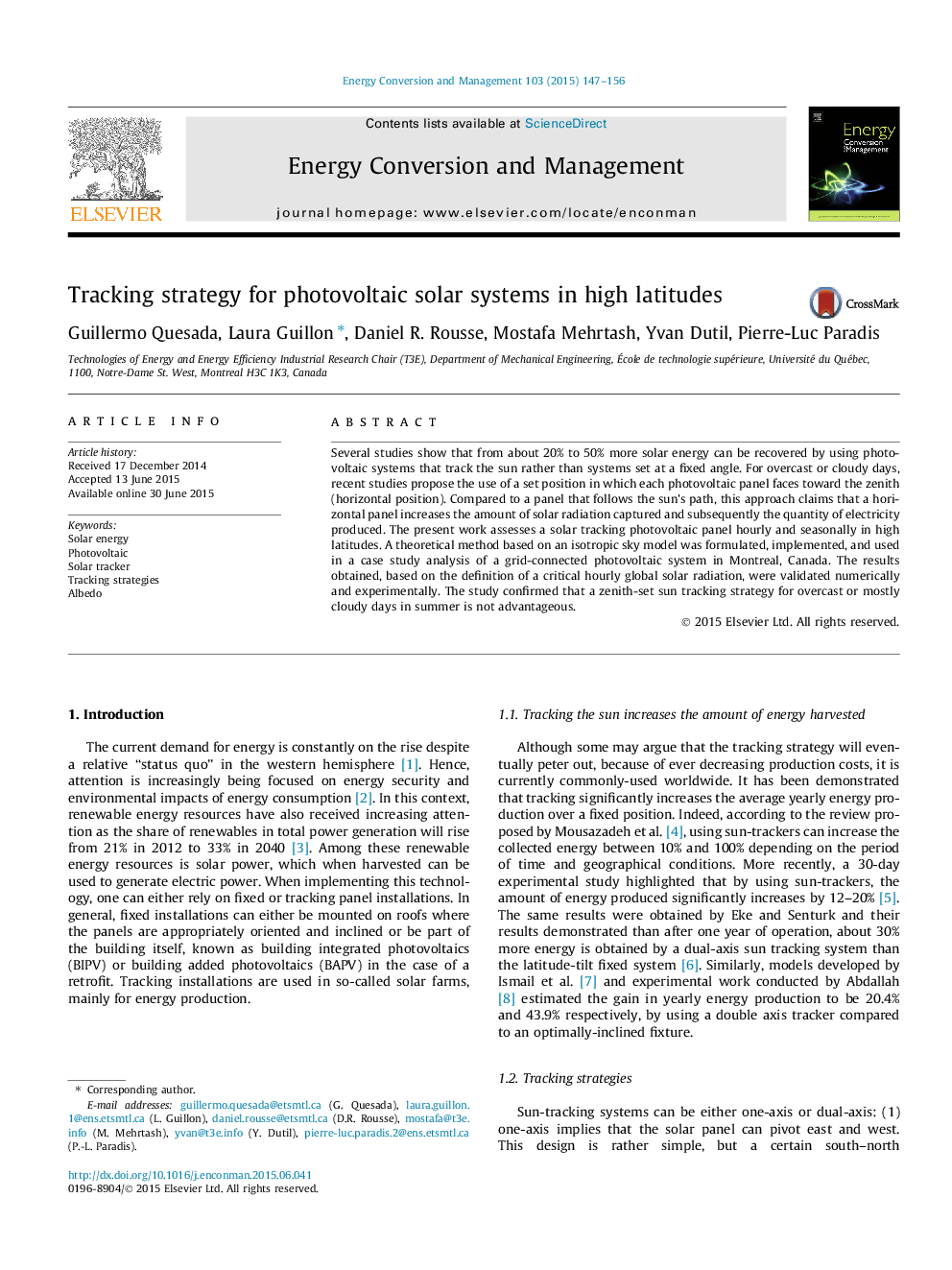| Article ID | Journal | Published Year | Pages | File Type |
|---|---|---|---|---|
| 771702 | Energy Conversion and Management | 2015 | 10 Pages |
•In cloudy conditions tracking the sun is ineffective.•A methodology to estimate a theoretical threshold for solar tracking was developed.•A tracking strategy to maximize electricity production was proposed.
Several studies show that from about 20% to 50% more solar energy can be recovered by using photovoltaic systems that track the sun rather than systems set at a fixed angle. For overcast or cloudy days, recent studies propose the use of a set position in which each photovoltaic panel faces toward the zenith (horizontal position). Compared to a panel that follows the sun’s path, this approach claims that a horizontal panel increases the amount of solar radiation captured and subsequently the quantity of electricity produced. The present work assesses a solar tracking photovoltaic panel hourly and seasonally in high latitudes. A theoretical method based on an isotropic sky model was formulated, implemented, and used in a case study analysis of a grid-connected photovoltaic system in Montreal, Canada. The results obtained, based on the definition of a critical hourly global solar radiation, were validated numerically and experimentally. The study confirmed that a zenith-set sun tracking strategy for overcast or mostly cloudy days in summer is not advantageous.
